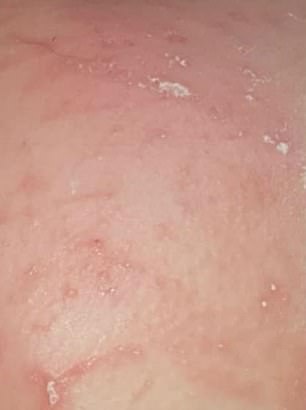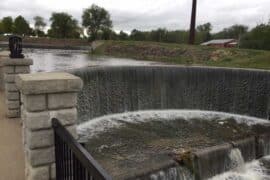Unraveling the Mysteries of Nappy Rash White Spots: A Parent’s Guide
Hey there, super moms and dads! Are you noticing some tiny white spots on your little one’s bottom and wondering what’s going on? You’ve come to the right place! Nappy rash is a common concern among parents, but when white spots appear, it can leave you scratching your head. Don’t fret! We’re going to dive into the world of nappy rash white spots and find out what they’re all about.
The Lowdown on Nappy Rash White Spots
First things first, let’s get to know what a nappy rash is. It’s a form of dermatitis that happens in the nappy area, mostly due to prolonged wetness, friction, and sometimes the presence of bacteria or yeast. But what about those pesky white spots? These can be a sign of a fungal infection, commonly candida – yes, the same one that causes thrush.
Causes: Why the Spotty Surprise?
So, why do these white spots appear, you might wonder? Here are some common culprits:
- Wetness: A nappy that’s been on duty for too long can create a haven for yeast and bacteria.
- Diaper friction: Rubbing against delicate skin can cause irritation and tiny abrasions, making it easier for yeast to set up camp.
- Introduction of new foods: Introducing solids can change the pH of poop, which might result in rash development.
- Antibiotic use: Both for baby or breastfeeding mom, it can disrupt the natural microbial balance.
Symptoms: Spotting the Signs
Ready to play detective? Keep your eyes peeled for these tell-tale signs:
- Red, inflamed skin in the nappy area
- Patches of white, scaly spots or sores
- Your baby may seem more uncomfortable or irritable, especially during nappy changes
Remember, every baby is unique, and so is their skin. So, if you’re unsure, it’s always a good move to visit your healthcare provider.
Tackling the White Spots Step by Step
Let’s talk strategy for keeping those white spots at bay:
1. Frequent Nappy Changes
Keep that bottom as dry as can be! Changing nappies often will reduce the moisture that yeast and bacteria love so much.
2. Air Time
Let that cute tush breathe! Give your baby some diaper-free time. This helps to keep the skin dry and heals the rash.
3. Barrier Creams
Establish a barrier between your baby’s skin and potential irritants. Zinc oxide creams are great for this.
4. Proper Nappy Fit
Make sure the nappy is fitted snuggly, but not too tight. Adequate room minimizes friction and lets air circulate.
5. Gentle Cleaning
Avoid harsh soaps and wipes. Instead, use gentle, fragrance-free products or plain water to clean the nappy area.
Remember, persistence is key! It may take some time before you see improvement, but with consistent care, those white spots should clear up. If you observe no change or the condition worsens, consult your pediatrician as prescribed antifungal medication may be necessary.
As you arm yourself with knowledge and the best care practices, you are ensuring that your little one will be happier, healthier, and free of uncomfortable nappy rashes. And when your baby’s happy, you’re happy too, right? Stay tuned for our next segment, where we’ll explore more advanced care tips and when to seek medical advice for persistent nappy rash with white spots.
Remember, you’re doing an amazing job, and every day is a learning experience filled with love, giggles, and sometimes a few surprises, like deciphering the riddle of nappy rash white spots. Keep up the great work!

5 Essential Preparation Tips for Preventing Nappy Rash White Spots
Understanding Your Baby’s Skin Needs
First and foremost, each baby has a unique skin type that could respond differently to various products or environmental factors. It’s crucial to observe how your baby’s skin reacts to different brands of nappies, wipes, and creams. Babies with sensitive skin may need extra gentle care to prevent irritation.
Choosing the Right Products
Selecting products specifically designed for sensitive skin, without harsh chemicals or fragrances, can make all the difference. Look for hypoallergenic options and those with soothing ingredients like aloe vera or almond oil. Additionally, consider cloth nappies as an alternative, as they can be gentler on the skin and environmentally friendly.
Maintaining Skin Hygiene
A clean and dry nappy area is fundamental in preventing rash development. Whenever your baby does a wee or a poop, clean the area gently but thoroughly. Using lukewarm water and cotton balls or a soft washcloth can be a kind way to keep the skin clean without causing irritation.
Creating a Diaper-Changing Routine
Establishing a solid diaper-changing routine is not only comforting for your baby but also allows you to keep track of how often they are wet or dirty. It’s recommended to check the nappy every two to three hours and change it promptly when needed. This will help in minimizing exposure to moisture and irritants.
Being Proactive with Dietary Choices
If your baby is starting on solids, their stool composition will change, which could potentially increase the risk for nappy rash. Introduce new foods gradually and monitor for any changes in their stools or signs of discomfort. A well-balanced diet with plenty of fiber can promote healthy digestion and prevent nappy rash.
By keeping these 5 essential tips in mind, you can create a loving and nurturing environment to both prevent and treat nappy rash white spots. Being proactive and informed is your best defense in ensuring your baby stays comfortable and rash-free. However, do bear in mind that if the rash persists or if there is any concern, it is best to consult with a pediatrician who can provide expert medical advice and care.
Now, equipped with nappy rash know-how, you’re all set to handle those little white spots like a pro! And don’t forget, every parent has been there, and you’re doing a brilliant job. Keep those spirits high, your love flowing, and of course, your baby’s bottom happy and healthy!
See more great Things to Do with Kids in New Zealand here. For more information see here
Disclaimer
The articles available via our website provide general information only and we strongly urge readers to exercise caution and conduct their own thorough research and fact-checking. The information presented should not be taken as absolute truth, and, to the maximum extent permitted by law, we will not be held liable for any inaccuracies or errors in the content. It is essential for individuals to independently verify and validate the information before making any decisions or taking any actions based on the articles.




